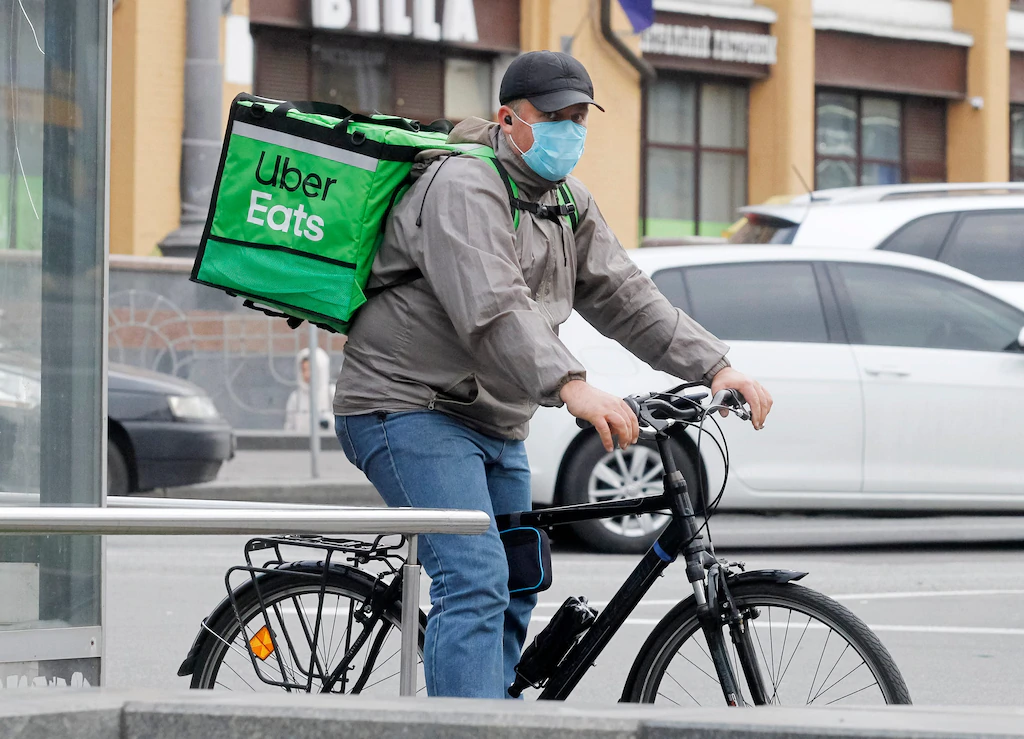Published on the 22/04/2020 | Written by Jonathan Cotton

Now that a return to Level 3 has been announced, could the future of Kiwi eateries be mobile?…
At 11.59pm, Monday 27 April, New Zealand will move out of its Level 4 lockdown, seeing the reopening of some hospitality establishments for restricted takeaway and pick up services.
When we move to Level 3, customers still aren’t permitted on premises, but contactless delivery (where customers pay online or over the phone) is allowed, as is kerb-side pick-up.
That will come as blessed relief for many in the hospitality industry. An industry of already slim margins, the Covid-19 pandemic has wiped out jobs and permanently closed doors already. For those hanging on, the costs – such as rent and leases – are beginning to stack up.
“Uber Eats is essentially taking the shirt off the industry’s back”
“New Zealand has so far remained an international outlier in terms of contactless and kerbside food delivery options, despite many countries maintaining these while under similar lockdown conditions,” says Restaurant Association CEO Marisa Bidois.
“Many restaurants and cafes around the world have been able to operate; not everyone, but many. In Australia for example, our closest neighbor, restaurants and cafes have been able to continue to operate in a contactless environment.”
New Zealand’s outlier status is a result of some bad early data, says Bidois.
“In the very early stages there was some research floating around that talked about how there was some possibility that Covid could be transferred via pre-prepared food.
“That has now obviously been debunked 100 percent, but in those early days, I guess there was a lot of information coming through and that was probably the reason for that decision [from the Government]. We don’t necessarily agree with that part of the decision.”
Bidois says that around a third of all restaurants, cafes and takeaway businesses in New Zealand (approximately five thousand businesses across the country), are considering reopening now that a move to alert level 3 has been announced.
“The fact that so many are considering reopening and adapting their business models to accommodate the new rules is testament to the innovative and resilient nature of those that work in hospo,” says Bidois.
“However even for those businesses it will at best allow them to break even.”
When it comes to online ordering and delivery platforms, there’s several players in the Australiasian market. Bigger names include Menulog and Restaurant Hub, as well as myriad smaller outfits, but the big player is UberEats, the San Francisco-based delivery giant with annual revenues of US$1.46 billion.
In response to the Covid-19 pandemic UberEats recently introduced a tipping option in Australia (where customers can offer a digital ‘tip’ to restaurants – soon to be rolled out in New Zealand), has announced a $5m TransTasman fund for independent restaurants, and has offered more quicker payments for cash-strapped restaurants.
It all looks good, but with commission rates between 33 percent and 36 percent per order, the service is a choice of last resort for many small restaurants.
“Uber Eats is essentially taking the shirt off the industry’s back,” says Bidois.
“Many owners would love to be in a position to not use them but with their marketing power and the size of their customer database, they don’t feel they can take the risk.”
The Restaurant Association has recently engaged with the company about lowering its fees to help the industry survive, says Bidois.
“We basically said to Uber, ‘If there was ever a time to support the industry, it’s now. Let’s see some flexibility on that commission rate’,” she says.
“We get that Uber has drivers they need to support, but at the end of the day, if 20 percent of our industry is wiped out, that’s going to affect their sales as well.”
San Francisco mayor London Breed has capped the commissions charged by food delivery apps such as UberEats and DoorDash, in order to help local restaurants retain profits during the Covid-19 crisis.
“Third-party delivery services typically charge restaurants a 10 to 30 percent commission fee, which can significantly cut into the restaurant’s profit margin,” said the Office of the Mayor when announcing the move.
“The cap on these fees is meant to support local restaurants and keep their businesses viable for the duration of the shelter-in-place order.”
The Retail Association is now calling on the New Zealand Government to create similar restrictions.
Until then, restaurants planning on contactless delivery in Level 3 should shop around, says Bidois.
“For restaurants it definitely pays to have a look around and see what’s out there.
“There’s a lot of other businesses that are really coming to the party now. I talked to someone yesterday – a local group – and they’re doing five percent [commission on deliveries], which is hugely different to 36 percent. It’s definitely worth shopping around.
“There’s a lot of innovation happening and a willingness to help, which I have found absolutely incredible, but there’s room to look into this space more and, yes, we’re sort of welcoming ideas.
“You may not get as slick-looking product perhaps, but at this stage it’s about getting food to customers in a way that’s going to support business thriving, not shutting down.”



























